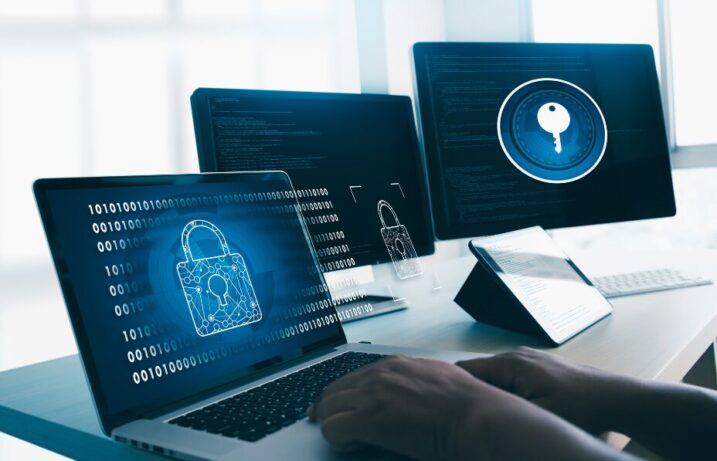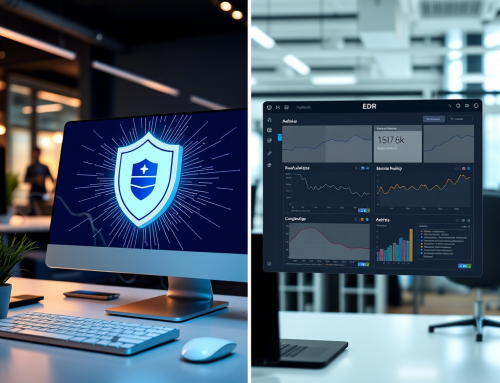Cybersecurity is pivotal for modern organizations. With evolving threats, having the right tools in place is paramount. Among the array of cybersecurity solutions, SIEM (Security Information and Event Management) and EDR (Endpoint Detection and Response) have emerged as two essential tools that organizations rely on for detecting and responding to threats. But which one should you prioritize? And how do they complement each other? Let’s explore.
What Are SIEM and EDR?
SIEM (Security Information and Event Management):
SIEM solutions aggregate log data from across an organization’s IT ecosystem. Think of it as a “big-picture” tool that collects, correlates, and analyzes security information from various devices, applications, and systems. SIEM excels at providing real-time visibility into security events, enabling teams to pinpoint potential risks.
EDR (Endpoint Detection and Response):
EDR specifically focuses on monitoring and protecting individual devices or endpoints (e.g., workstations, servers, or mobile devices). It detects suspicious behaviors at the endpoint level and provides remediation capabilities to stop threats in their tracks. Consider it the “frontline defender” for your network.
SIEM vs. EDR: Detecting and Responding to Security Threats
Both tools play critical roles, but their functions and scopes differ:
- Detection Capabilities: SIEM provides a centralized view of an organization’s security posture. It identifies threats by correlating data from multiple sources. EDR, on the other hand, detects threats that specifically target endpoints by analyzing device behaviors and patterns.
- Response Mechanisms: EDR empowers security teams to act quickly by isolating infected endpoints, removing malware, or rolling back systems to a safe state. SIEM aids response indirectly through comprehensive reporting, alerting, and forensic analysis, helping teams understand the broader context of an incident.
- Scope: SIEM watches the entire network, while EDR zeroes in on individual devices. Together, they cover both the macro and micro levels of security monitoring.
How SIEM and EDR Work Together for Comprehensive Security
While SIEM and EDR can be deployed independently, the real power is in their integration. When these tools work together, they create a holistic security ecosystem:
- Enhanced Threat Visibility:
EDR provides granular insights into endpoint activities, while SIEM correlates those insights with data from the broader IT infrastructure. For instance, if EDR detects a malware attack on an endpoint, SIEM can help trace the attack’s source or uncover related suspicious activities across the network.
- Faster Incident Response:
Integrated SIEM and EDR solutions allow security analysts to identify threats more quickly and respond with precision. While SIEM identifies anomalies and generates alerts, EDR offers containment and remediation options in real time.
- Streamlined Workflows:
Modern security tools often integrate via APIs, creating seamless workflows. Alerts generated by SIEM can be enriched with endpoint data from EDR, ensuring security teams have comprehensive details at their fingertips.
Why Integration Between SIEM and EDR Is Essential
The evolving threat landscape requires organizations to take a unified approach to cybersecurity. Integration between SIEM and EDR is no longer a luxury—it’s a necessity. Here’s why:
- Holistic Threat Defense: By combining the macro-level focus of SIEM with the micro-level precision of EDR, organizations can defend against a wider range of threats.
- Reduced Alert Fatigue: SIEM alone may generate a high volume of alerts, some of which may be false positives. EDR helps validate and prioritize these alerts, reducing noise for security teams.
- Improved Resource Allocation: Integrated systems reduce redundancies and allow security teams to focus on high-priority issues, optimizing productivity.
Real-World Applications of SIEM and EDR
Consider the following scenarios:
- Scenario 1: A financial institution employs SIEM to monitor millions of daily transactions for anomalies while using EDR to protect employees’ devices from phishing attacks. Together, these tools help secure both the network and endpoints.
- Scenario 2: A healthcare organization integrates SIEM and EDR to protect sensitive patient data. When the SIEM detects unusual login patterns, the EDR isolates the potentially compromised endpoint, preventing further data breaches.
- Scenario 3: A tech startup uses both tools to meet compliance needs. SIEM provides audit trails for regulatory reporting, while EDR ensures endpoint security against potential vulnerabilities.
Choosing the Right Tool for Your Organization
Selecting between SIEM and EDR—or deciding to deploy both—depends on your organization’s unique needs:
- Focus on SIEM if:
Your organization requires broad visibility across the network, compliance reporting, and the ability to analyze security events from multiple sources.
- Focus on EDR if:
Your priority is endpoint protection, quick containment of advanced persistent threats (APTs), and detailed forensics at the device level.
- Choose Both if:
You’re looking for a balanced and comprehensive cybersecurity strategy that addresses both network-wide threats and endpoint-specific risks.
Critical considerations include your budget, IT environment complexity, and the maturity of your security operations center (SOC).
Future Trends in SIEM and EDR Technologies
The cybersecurity landscape is constantly evolving, and both SIEM and EDR technologies are moving toward smarter, more automated solutions:
- Artificial Intelligence and Machine Learning: Both SIEM and EDR are leveraging AI to improve threat detection accuracy, automate responses, and provide predictive analytics.
- XDR (Extended Detection and Response): Combining the capabilities of SIEM, EDR, and other tools, XDR represents the future of integrated cybersecurity. It aims to deliver even greater visibility and unified threat management.
- Cloud Integration: With more organizations moving to cloud environments, both SIEM and EDR are becoming optimized for detecting, managing, and preventing threats in hybrid and multi-cloud settings.
- Zero Trust Architecture: SIEM and EDR are increasingly aligned with zero trust models, ensuring that no endpoint, user, or connection is inherently trusted.
The question isn’t whether SIEM or EDR is important—both are critical in safeguarding organizations against modern threats. While SIEM offers big-picture security visibility, EDR provides in-depth endpoint protection. Their integration enables a comprehensive defense strategy that covers every corner of your IT environment.
Deciding which tool to prioritize comes down to your organization’s unique needs, but in many cases, combining the strengths of both SIEM and EDR yields the best results. By investing in these technologies today, your organization can stay ahead of attackers and be better prepared to tackle the threats of tomorrow.





